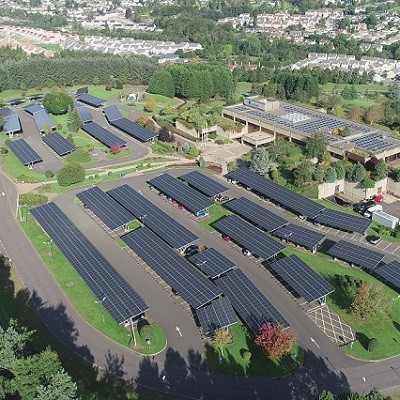
2020-12-21
Visited : 2977
A consortium of college research teams and private companies led by Hanwha Q Cells, a major photovoltaic manufacturer in South Korea, was selected for a state project to commercialize perovskite crystalline silicon solar cells by using next-generation tandem cell technology to overcome theoretical limits for single-cell efficiency.
In an effort to widen the technology gap with China, South Korean companies and researchers have tried to develop new solar energy technologies such as tandem cells that build perovskite on top of silicon solar cells. Tandem solar cells can be individual cells or connected in series, which are simpler to fabricate but the current is the same though each cell.
A perovskite solar cell includes a perovskite structured compound as the light-harvesting active layer. Compared to silicon solar cells, perovskite solar cells are cheap and simple to produce. Their high absorption coefficient enables ultrathin films to absorb the complete visible solar spectrum, leading to the creation of low cost, efficient, thin and flexible solar modules.
For South Korea's state project to develop next-generation solar cell technologies and beat out Chinese companies in the global market, the consortium led by Hanwha Q Cells aims to secure and commercialize original technologies for basic materials.
"We will also secure leading technologies in the next generation of solar energy to enhance our competitiveness in the global solar energy market," said Hanwha Q Cells CEO Kim Hee-cheul.
Read the original article on AJU Business Daily.